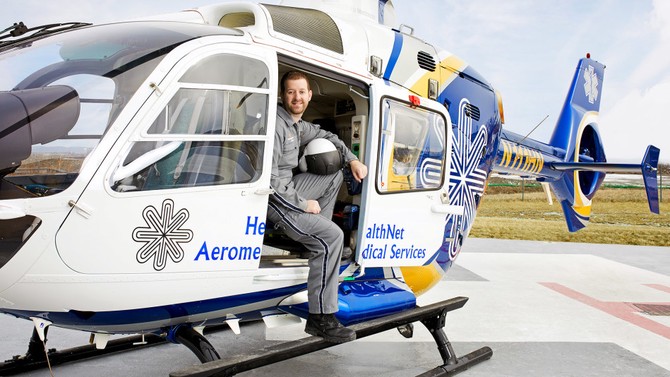10 Superhero Nurses Making a Big Difference
They tend to us, calm us, and ease our pain—even when it means jumping into a chopper, braving a line of protesters, or scolding a lawmaker or two. Meet ten people who prove that caring is a calling.
Safe Passage: Kevin Steurer
The call seemed routine: Pick up a toddler with an enlarged heart and bring her back to the pediatric ICU at WVU Medicine Children's Hospital in Morgantown, West Virginia. Kevin Steurer's team jumped into an ambulance and sped two hours into the Appalachian Mountains. When they arrived at the ER of the little girl's local medical center, Steurer, a pediatric transport nurse, took one look at her ashen skin, half-closed eyes, and labored breathing and knew she might not survive the return drive. He grabbed the phone and called the specialist waiting for them. "We'll lose her if we don't intubate," he said, "but I'm worried even that will be more than she can take."
With the clock ticking, Steurer gave the child a diuretic to reduce the stress on her heart and used nasal tubing to deliver oxygen. Yet they still needed to move quickly, faster than an ambulance could go. He decided to change course: They'd take a helicopter.
The girl's sobbing parents refused to leave her side. But there was no room for them in the aircraft, so Steurer explained exactly what he'd be doing and why, and urged them to drive carefully—their daughter would be in excellent hands. Then he tucked the patient into the ambulance, raced her to a nearby helipad, transferred her to the waiting chopper, and monitored her vital signs while the pilot whisked them to the ICU. The 90 minutes they shaved off the trip likely saved her life.
Last year Steurer transported 72 pediatric and neonatal patients; during one especially busy shift, he escorted five children to safety. Not all rescues are harrowing, but when you're bringing seriously ill and injured kids to the ICU and providing emergency care on the way, the stakes are always high.
Performing chest compressions on a tiny patient in an ambulance careening along a twisting backcountry road? Steurer has done it. Inserting a needle into a child's artery between bouts of turbulence at 4,000 feet? He's done that, too. More recently, he's also spent agonizing hours comforting infants who were born addicted to opioids and are suffering withdrawal.
After three and a half years in the field (and the air), often on call for 24-hour shifts, Steurer is now helping train the next generation of mobile child savers. He tells them three things: (1) Trust your gut, because babies can't describe how they feel. (2) It's okay to be scared—scary things happen. (3) Work as a team. To transport that toddler, Steurer coordinated with the WVU doctor, a respiratory therapist, doctors and nurses at her local hospital, a medical command dispatcher, the ambulance driver, the helicopter pilot, and her parents. And after being in the hospital for seven weeks, she was, thanks in large part to Steurer's efforts, allowed to go home and get back to the business of being a 2-year-old.
—Lambeth Hochwald
Published 04/27/2018


